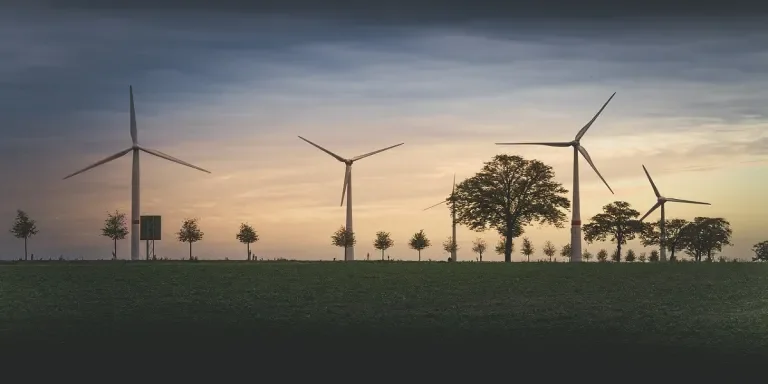Not all properties support solar panels. However, that should not restrict owners from opting for clean energy sources. Alternative sources like wind can supply green energy to properties. A small wind turbine is the most feasible option for those who want a stable, sustainable, low-cost power supply.
According to an Allied Market Research Report, the global small wind power market was estimated at US $7.4 billion in 2020. This number is forecasted to hit US $17.1 billion by 2030, registering a compound annual growth rate (CAGR) of 8.8% from 2021 to 2030.
This market has witnessed tremendous growth opportunities across the globe. The increasing awareness among consumers of environmental hazards and rapid industrialization are the driving factors behind this change. Government agencies have also become more interested in expanding their power supply with renewable sources.
The global energy crisis is critical, and both public and private organizations are all set to take some remedial measures beforehand.
Table of Contents
Overview of small wind turbines
5 factors to consider when buying a small wind turbine
Installation and maintenance of small wind turbines
Conclusion
Overview of small wind turbines
Small wind turbines are also referred to as home wind turbines. These are much smaller than the wind turbines placed on wind farms. While large wind turbines have a blade diameter that is sometimes as long as a football field, small wind turbines have a 10-meter-wide diameter. Consequently, the power output of small wind turbines is lower than that of its larger counterparts. This makes it a perfect clean energy source for homes and off-grid applications.
The placement of a home wind turbine can also impact its output potential. On a general note, a taller turbine can access more wind and consequently produces more electricity. Perhaps this is why people in rural areas are increasingly choosing small wind turbines as an energy source. They have plenty of space and few obstacles to alter the wind speed. Sometimes, a wind turbine that can access higher wind volume can offset 100% of the electricity bill.
Furthermore, hybrid solar and wind systems are also growing in popularity. They provide more hours of clean energy generation than standalone wind and solar systems.
As part of a hybrid structure, photovoltaic systems and wind turbines will work the same way as they operate when installed independently. The panels are placed on the roof while turbines are placed on nearby land. The two systems are wired to a battery pack, which stores energy and supplies it to the home. Verifying the local permits before installing the wind–solar hybrid system is a prerequisite.
5 factors to consider when buying a small wind turbine
1. Size and weight
It is necessary to determine what size of the wind turbine will be suitable for a home as the installed capacity that can be achieved with different sizes may vary. Typically, a small wind turbine for home use ranges in size from 300 watts to 20 kilowatts, depending on the amount of electricity consumed by the residents.
The size of a wind turbine should be small enough to fit on the property at the correct location. Also, it must have an adequate size to stay sturdy in high winds.
2. Local zoning codes
When considering investing in wind energy production for a property, one should keenly understand the local zoning codes.
Some local jurisdictions have zoning ordinances that address the distributed wind system. These ordinances are quite diverse in their terms and provisions. For instance, some areas have height restrictions and do not permit a wind turbine to be more than 500 feet.
These codes also address factors such as noise, property size, and utility notifications. Consulting a wind turbine technician will be helpful as they will analyze the property and power requirements to provide an accurate wind turbine recommendation.
3. Efficiency

Selecting an efficient wind turbine allows sufficient energy production even when there is less wind. An estimate of wind energy output per annum will allow owners to determine whether the wind turbine they plan to install will produce enough electricity to meet their needs.
Again, a professional wind turbine technician can help to estimate the final energy production. They will calculate based on the following factors:
- Particular wind turbine power output
- Annual wind speed at the site
- Height of the tower
- Frequency distribution of the wind (the number of hours at which wind blows at a certain speed throughout the year)
An insight into these factors will allow owners to select the most suitable home wind turbine.
4. Budget
Budget can create some limitations for homeowners who wish to place small wind turbines on their properties. For starters, it is vital to know the energy budget because energy efficiency is often less expensive than its production. Reducing electricity consumption will be more cost-effective, and a smaller wind turbine will be required to power the house.
Factors that affect the cost of home wind turbines are:
- Wind turbine’s capacity
- Quality of unit and production potential
- Type of the turbine (vertical or horizontal axis)
- Size of the wind turbine (nameplate capacity, hub height, rotor diameter)
- Installation charges
Small wind turbines may range between a few hundred to several thousand dollars. Each homeowner should evaluate their power needs and scan the wind turbine market to find the best model. With a wide range of technologies available today, it has become easier to find a wind turbine that fits the budget while fulfilling all necessary power needs.
5. Climate and wind supply
Different locations have different climates, which is the reason behind fluctuating wind resources. Before selecting a wind turbine, homeowners must research their area and understand the typical wind speeds. It is quite possible to have varied wind resources within the same property.
Along with the geological formations, attention should be paid to obstacles like trees, sheds, and houses. Sometimes, people looking for a home wind turbine fail to plan for future obstructions and face challenges later. It is essential to consider all possibilities, such as trees or new buildings that haven’t reached their full height yet.
Installation and maintenance of small wind turbines
Installation is the next step after finalizing the best small wind turbine. In most cases, people should seek professional assistance to install the setup. A wind turbine technician will wire the system and place it in the position with maximum wind supply.
Property owners must conduct a thorough background check before booking an appointment with the turbine professional. Find out if the selected person or company is licensed and ask around to know their credibility.
With proper installation and maintenance, a small wind turbine for home use should last up to 15–20 years. Regular maintenance must include:
- Checking for corrosion
- Checking the electrical connections and bolts
- Replacing parts like turbine blades and bearings
- Checking and replacing worn-out edge tape on the turbine blades
Homeowners should hire an expert for regular inspection of the wind turbine. This will allow them to take the necessary measures beforehand and save on hefty repair costs that may occur later.
Conclusion
Investing in a small wind turbine reduces carbon emissions and positively impacts the environment. In addition, the owners can reduce their exposure to future energy shortages and price increments.
Deciding whether to purchase a wind turbine is difficult as there are many factors to consider. But, the right set of circumstances and a well-designed wind power system will guarantee many years of cost-effective and reliable clean energy.
Check out Alibaba.com to find the right small wind turbines that deliver uninterrupted power.




